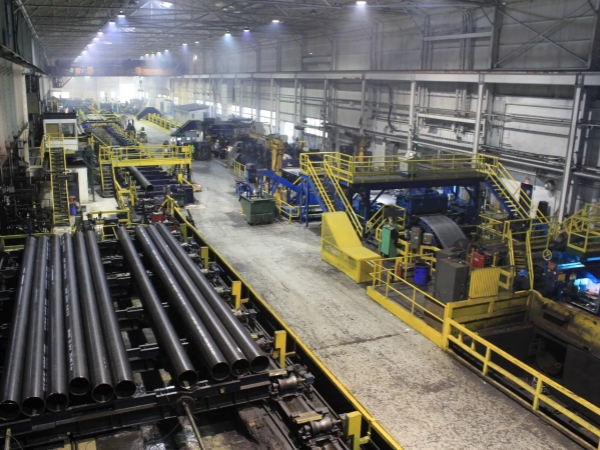An ERW (Electric Resistance Welding) steel pipe production line is a manufacturing facility used to produce electric resistance-welded steel pipes. ERW pipes are commonly used in various industries for transporting fluids and gases, structural applications, and more.
The complete ERW steel pipe production line mainly includes: decoiler - strip leveling - shear butt welding machine - material cage/storage sleeve - forming machine - welding machine - deburring - sizing machine - flaw detection - flying saw cutting - preliminary Inspection-steel pipe straightening-pipe section processing-hydraulic test-flaw detection, etc. Here are the main components and steps involved in an ERW steel pipe production line.

Steel Coil Uncoiler:
The process starts with uncoiling a large steel coil. The uncoiler unwinds the coil and feeds the steel strip into the production line.
Shearing and End Welding:
The steel strip may be cut into shorter lengths, and if required, the ends of the strips are welded together to create a continuous feed of steel.
Forming:
The steel strip is passed through a series of forming rolls to give it a circular shape. The edges are heated to make them pliable and then forged together. This is where the electric resistance welding takes place. High-frequency electrical current is passed through the edges, causing them to heat and fuse together.
Weld Seam Testing:
The welded seam is inspected for quality, and any defects are identified. This is crucial for ensuring the integrity of the final product.
Sizing Mill:
The pipe is then passed through a series of sizing rolls to obtain the desired outer diameter and wall thickness.
Cutting and Sizing:
The continuous pipe is cut into specific lengths and then the ends are sized, beveled, and sometimes threaded or grooved depending on the customer's requirements.
Quality Control:
Throughout the production process, quality control checks are performed to ensure that the pipes meet the required specifications and standards.
End Finishing:
The pipe ends may be finished as per the requirements, which could include facing, beveling, or threading.
Surface Treatment:
The pipes may undergo various surface treatments, such as cleaning, coating, or painting, for protection against corrosion.
Inspection and Testing:
The finished pipes go through a series of tests, including hydrostatic testing, ultrasonic testing, X-ray inspection, and visual inspection to ensure they meet quality and safety standards.
Packaging and Storage:
The finished pipes are packaged and prepared for shipping or storage, awaiting distribution to customers.
ERW pipe production lines can vary in terms of size and capacity, and they are commonly used for producing pipes with diameters ranging from a few millimeters to several inches. The specific processes and equipment used may vary depending on the size and type of pipes being produced and the industry standards to which they must adhere.